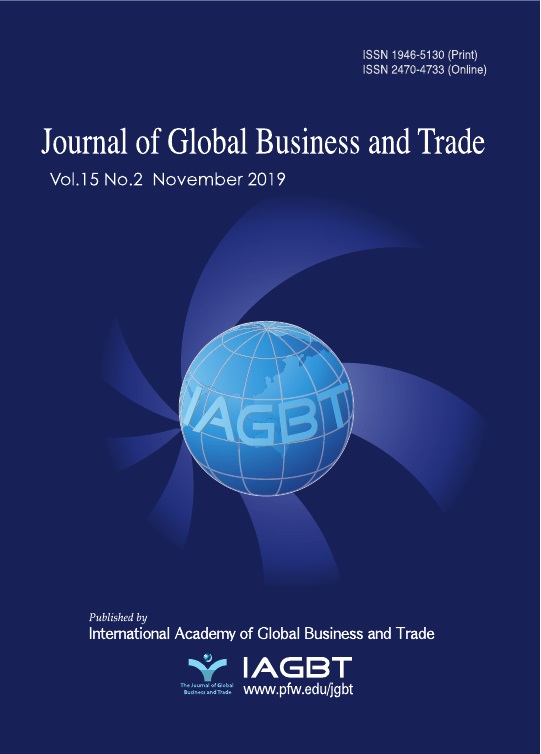- 영문명
- 발행기관
- The International Academy of Global Business and Trade
- 저자명
- Roberto C. Valenzuela III Maria Luisa G. Valera
- 간행물 정보
- 『Journal of Global Business and Trade』Vol. 15, No. 2, 1~9쪽, 전체 9쪽
- 주제분류
- 사회과학 > 무역학
- 파일형태
- 발행일자
- 2019.11.30

국문 초록
영문 초록
Purpose – A treasury bill (T-bill) is the safest money market instrument issued by the Philippine government
and matures in a year or less than a year. This paper identified and analyzed the factors that affect the
movement of the T-bill rate in the Philippines.
Design/Methodology/Approach – An Ordinary Least Squares (OLS) technique was applied in this study
using time-series data from 1971 to 2015. The process of forward splicing was used to complete the data of
Consumer Price Index (CPI). Splicing is defined as the process of combining two or more index numbers of
different bases into a continuous series of index numbers of a common base. There are two types of splicing:
backward and forward splicing. In this study, only forward splicing was used because of missing data in recent
years. To see if there was a structural break in the model caused by external shock (financial crisis), the model
was tested for a structural stability test: specifically, the Chow Test.
Findings - Based on the result, having low economic growth, low expected foreign returns, and high inflation
would result in a high T-bill rate. Any major financial crisis can also influence the T-bill rate positively due to
the influx of investors who would want to secure a safe investment. Furthermore, investors would be risk
averse by investing in T-bills if the performance of the economy is sluggish and the expected foreign return is
low. Thus, the T-bill rate serves as an investors’ guide on when they would take a riskier investment or a safer
investment.
Research Implications – Most studies related to this topic focused only on the use of real gross domestic
product, real money supply, and expected foreign returns as factors affecting the Treasury Bill Rate. Adding
two other variables in the model, inflation as well as financial crisis, and testing it for structural break,
multicollinearity, and autocorrelation were the added value of this paper. Such tests are crucial for unbiased
regression results that will affect the policy implications if not addressed properly.
목차
Ⅰ. Introduction
Ⅱ. Literature Review
Ⅲ. Methodology
Ⅳ. Results and Discussion
V. Conclusion
키워드
해당간행물 수록 논문
참고문헌
최근 이용한 논문
교보eBook 첫 방문을 환영 합니다!

신규가입 혜택 지급이 완료 되었습니다.
바로 사용 가능한 교보e캐시 1,000원 (유효기간 7일)
지금 바로 교보eBook의 다양한 콘텐츠를 이용해 보세요!



